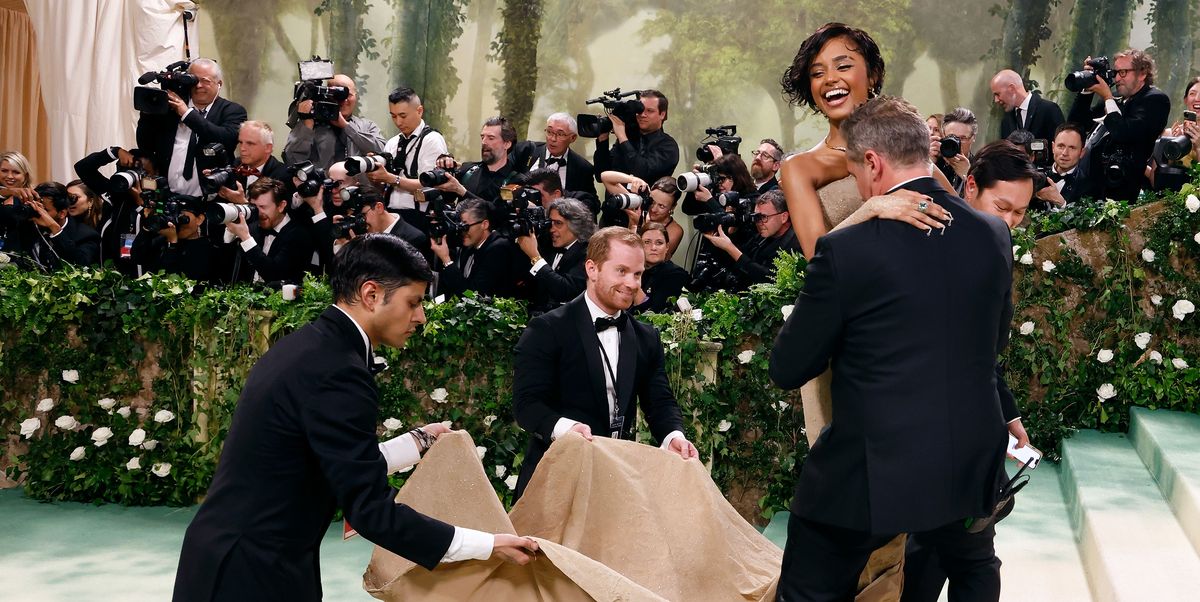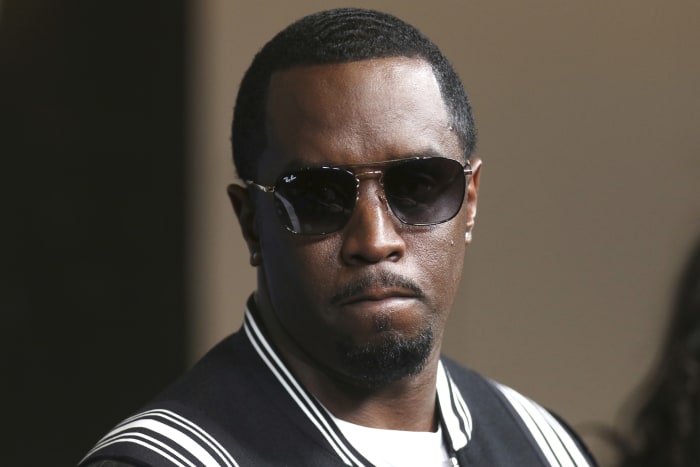Fashion
The Met Gala Has Highlighted Fashion’s Obsession With Discomfort – Is That So Wrong?

This is not the first Met Gala at which Kim Kardashian has struggled for breath. In fact, over the years, the reality-star-turned-business-mogul has made a point of wearing lung-defying costumes. In 2019, she learned special breathing techniques to accommodate her dripping crystal and latex Mugler dress made in collaboration with renowned corsetier Mr. Pearl. In 2021, she covered herself from head-to-toe in black Balenciaga, which, as Kris Jenner later explained, meant she ‘couldn’t breathe and couldn’t see’ – relying on others to lead her around the ball. In 2022, she went on a three-week crash diet to fit her already diminutive proportions into Marilyn Monroe’s famous Jean-Louis Scherrer ‘Happy Birthday, Mr President’ dress.
These feats have always been framed as a mixture of dedicated work and noble sacrifice. ‘I have never felt pain like that before in my life,’ she said of the glittering 2019 outfit. ‘It was such a challenge,’ she explained in 2022 of her gruelling physical journey towards becoming an uncannily smoothed out Monroe homage. ‘I was determined.’
This year Kardashian turned up in bespoke Maison Margiela. Riffing on creative director John Galliano’s phenomenally successful couture show in January full of distorted silhouettes, artful merkins and porcelain doll make-up, this look featured a delicate floral chainmail skirt cinched in dramatically at the waist. One part metal armour, one part time-weathered statue blessed with a little cardigan for warmth on harsh nights, it was surprisingly on theme (the dress code this year was based on J.G. Ballard’s 1962 short story The Garden of Time – a puzzling choice to put it mildly, given its focus on class conflict.) Much of the resulting commentary, understandably, focused on the disconcerting size of Kardashian’s waist, asking if she’d had ribs removed or commenting on the obvious discomfort she was in as she tottered along the ombré green carpet.
FIND OUT MORE ON ELLE COLLECTIVE
Kardashian wasn’t the only attendee whose outfit inhibited their movement. Tyla, in a fabulously ominous Balmain gown covered in sand, had to be forcibly lifted up the steps. Cardi B was enveloped in so much black tulle that she needed nine helpers to fan out her dress. Everywhere you looked on the livestream, swarms of tuxedo-clad assistants were found carrying heavy trains, fluffing skirts, helping celebrities ascend the stairs with baby sideways steps, and so on. Many of those who attend the Met Gala do not arrive in conventional cars but come by mini-bus or van – standing either because they do not wish to crease their skirts, or because they physically cannot sit.
The conclusion one might take from this is to decry the absurd frivolity that leads to women parading outfits they can’t properly walk in. Isn’t such restriction an incredible symbol of decadence, especially in a year where the theme – whether inadvertently or intentionally – introduced an uncomfortably dystopic note to the proceedings, hinting at darker currents beneath the glitz? Doesn’t it sound like a scene plucked from Italian poet and philosopher Giacomo Leopardi’s observations in his 1824 Dialogue Between Fashion and Death, where Fashion smugly lists her persuasive abilities? ‘Crippling people with tight shoes; cutting off their breath and making their eyes pop out because of their tight corsets… I persuade and constrain all genteel men to endure a thousand hardships and a thousand discomforts every day, and frequently pain and torment, and some even die gloriously for the love they bear me.’
No-one has yet managed to die for their love of fashion at the Met, but the corset reference is interesting. In the past few years, corsetry has experienced an enormous resurgence – aided by a fresh obsession with archival pieces from the 1980s and 1990s, especially those by Thierry Mugler, Vivienne Westwood, and Jean-Paul Gaultier, as well as Galliano and Alexander McQueen. Other notable corseted guests at the Met Gala last night included Emma Chamberlain, Taylor Russell, Zendaya and Paloma Elsesser, many of them wearing riffs on or homages to those very designers.
This revival has also dusted off that hoary old debate about clothing and oppression. One of the dominant narratives about fashion – the same one exemplified by Leopardi – has been that it primarily serves to subjugate its wearers, seducing them with promises of splendour and entrapping them with cumbersome, dangerous designs that weigh them down, injure them, unbalance them, or otherwise render them helpless. Over time, this line of thinking has led to accusations of fashion being a tool of the patriarchy, a method by which gay men can exercise their hatred of women, and all sorts of other charges on a spectrum running from simplistic thinking to naked homophobia (file Coco Chanel’s pops at Dior and Balenciaga for not understanding women’s bodies under the latter). Discomfort at artifice and exaggeration is buried beneath concerned moral piety. In such arguments, the corset – alongside the high heel – emerges as the ultimate guilty party, its literal constrictions and physically manipulative abilities taking on enormous symbolic power.
Dress historians find this a tiresome take, repeatedly pointing out that such characterisations are both incorrect and absent women of any real autonomy. As far back as 2001 fashion academic and curator Valerie Steele was writing in The Corset: A Cultural History that ‘much of what we think we know about corsets is false or exaggerated.’ Sometimes they were inconvenient and uncomfortable, yes, but also if fitted correctly they could be surprisingly supportive – similar, even, to a bra, especially for larger-chested women. Our image of fragile, fainting damsels owes more to Hollywood than it does historic record. Aligning female liberation with a loosening of both dress and undergarments across the course of the twentieth century might feel persuasive, but the reality isn’t as neat. Besides, as Steele later points out, over that same period of time ‘the corset did not so much disappear as become internalised through diet, exercise and plastic surgery.’
Kardashian is the ultimate emblem of bodily modification, both internal and external. Perhaps this us why the tone of some of the commentary on her corset, professing outsized concern for her or belittling her stylist and design team, feels odd. You can take issue with the impossible visual standards she embodies; both compass and bellwether of Western beauty ideals, her weight loss over the past couple of years maps the renewed veneration of thinness. But you can’t see the extremity of her outfit choice as anything other than entirely intentional. Year after year, Kim comes to the Met Gala and proves that her body, at least to her, is her most valuable asset. Depending on how you feel about her place in popular culture, you might read that statement as either diminishing or appropriately dismissive. It is meant to be neither. It’s just true – and is the reason why she now owns a shapewear company worth an estimated $4 billion.
Besides, there are plenty of scenarios where we accept that, as spectators, we may take pleasure from watching someone in physically arduous circumstances. Ballet and football both immediately come to mind and are much more taxing – requiring years of training and an acceptance of serious possible injury. This is just a glorified pageant. If we accept the Met Gala for what it has become, a mass entertainment event that earns a gargantuan amount of money for a lot of brands and a lot of people who have deals with those brands (alongside fundraising for the Costume Institute), then we must also accept that some of those people, in the name of visual spectacle or heightened exposure or a commitment to fashion’s most absurd and thrilling reaches, will put themselves in a degree of discomfort for a couple of hours. The only question to then ask is whether they’ve managed to pull it off.
ELLE Collective is a new community of fashion, beauty and culture lovers. For access to exclusive content, events, inspiring advice from our Editors and industry experts, as well the opportunity to meet designers, thought-leaders and stylists, become a member today HERE.













